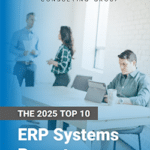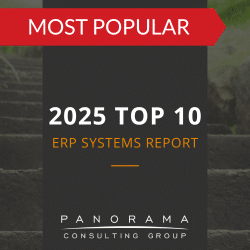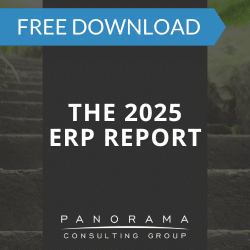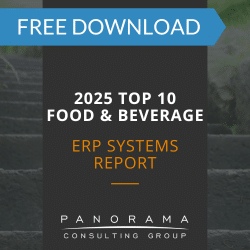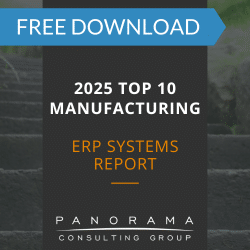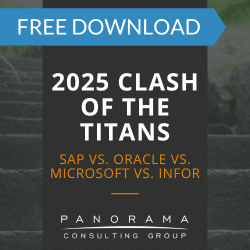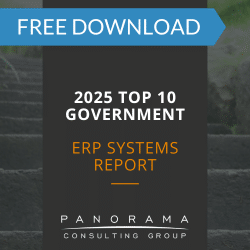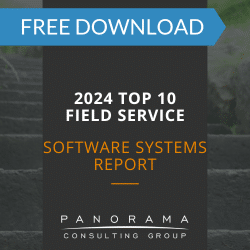Coinciding with the release of the first cryptocurrency in 2009, ERP vendors began announcing the availability of their latest innovation: ERP/blockchain integrations.
While blockchain technology has seen its share of ups and downs, including the recent 2022 Bitcoin crash, it has largely been a power player in today’s enterprise environment.
But how long will it continue to do so? Let’s talk about the ins and outs of implementing blockchain in ERP.
Understanding the ERP/Blockchain Connection
There are four main types of blockchain technology. These include:
- Public
- Private
- Hybrid
- Consortium
While each has its own features, they all use distributed ledger technology to manage transactions and ensure data security.
As its name implies, each block on the chain contains a unique set of data, and all of the blocks are linked together. This prevents hackers from changing or eliminating any data, as such changes would immediately be visible across the entire network.
How does that relate to ERP? When integrated with blockchain, an ERP platform can not only store and manage data but also maintain a secure record of transactions.
Consider the benefits of this integration in the area of supply chain management. A company might already use ERP software to automate its ordering and shipping processes, but blockchain can track the goods as they move from one checkpoint to another. Together, these two technologies can make the other more efficient.
Software Selection & Process Improvement Case Study
In helping the client get its project back on track, one of our primary focus areas was decreasing their customization needs by improving their processes to align with the system's best practices.
Industry Applications
Many of the top ERP vendors, including SAP, Microsoft, and Oracle, have integrated blockchain technology into their offerings. While each solution has its own features and functionality, they can each help companies improve supply chain traceability, automate transactions, and secure their data.
While this can benefit many industries, it’s especially helpful in sectors where quality assurance and industry compliance are paramount. Below are just two industries where this applies.
Blockchain for the Manufacturing Industry
In any given manufactured part, there could be hundreds or even thousands of components, coming from a variety of different suppliers.
By recording manufacturing activities on a real-time ledger, the blockchain helps companies track the status of each component before, during, and after the manufacturing process. This not only streamlines operations but makes it easier to pinpoint where problems occurred. Manufacturers can isolate and remove just that part to keep production up and running.
At the same time, blockchain helps facilitate and record communications between supply chain stakeholders. Especially for companies that have a vast network of contract suppliers, a detailed ledger can be helpful when coordinating and tracking work orders. With just a few clicks, users can gain up-to-the-minute visibility into vendor inventory and perform tasks, such as:
- Creating and enforcing service level agreements (SLAs)
- Performing continuous audits
- Certifying and tracing the origin/authenticity of all products
- Completing invoice financing
Blockchain-supported ERP software maintains a record of all these activities, making it easier for one supply chain partner to communicate and collaborate with the next.
(What’s the best ERP system for manufacturing?)
Blockchain for the Food and Beverage Industry
Based on data from real-time transactions, blockchain technology can quickly identify potential sources of contamination along the supply chain. Then, quality teams can recall that product before it hits the shelves.
Without such technology, F&B manufacturers may have no other choice but to shut down their entire supply chains while they determine where the problem started and how far it spread.
Benefits of ERP/Blockchain Integration
Thinking about enhancing your ERP software with blockchain technology? In addition to easier supply chain management, here are a few of the top benefits this integration provides.
1. Tracking Compliance
Certain industries, such as healthcare, finance, and manufacturing, must meet strict regulatory requirements for safety, sanitation, and security. Blockchain can help these companies track and organize the necessary information, even when compliance documentation requirements are complex.
2. Facilitating Multi-Party Transactions
From completing SLAs to tracking royalties, many business transactions involve multiple parties and processes. A blockchain-enabled ERP system can streamline each step of these transactions, minimizing friction between parties and reducing complexity.
3. Monitoring Equipment Maintenance
Companies can use blockchain technology to automate scheduled maintenance and optimize asset utilization.
This is becoming more mainstream as an increasing number of parts are equipped with sensors and connected to one another via the Internet of Things (IoT). Companies can monitor these sensors to understand a machine’s operating status and perform preventative maintenance, repairs, and upgrades as required.
4. Fewer Paper-Based Processes
An ERP implementation is one way to reduce the number of paper-based processes. Adding blockchain creates the opportunity to have even more digital assets.
With this technology, companies can reduce the number of documents they need to execute routine transactions. This means less paperwork and more time devoted to mission-critical business activities, such as developing new products and improving customer service.
Learn More About Implementing Blockchain in ERP
Modern technologies are breathing new life into traditional ERP systems. Implementing blockchain in ERP software transforms the system into a real-time ledger, enabling companies to improve transparency, security, and efficiency.
From manufacturing to healthcare to logistics, many industries can benefit from these tools, and the combined features are already proving invaluable to supply chain stakeholders.
Is your organization interested in learning more about the ERP/blockchain connection? Contact our ERP consultants below for a free consultation.
